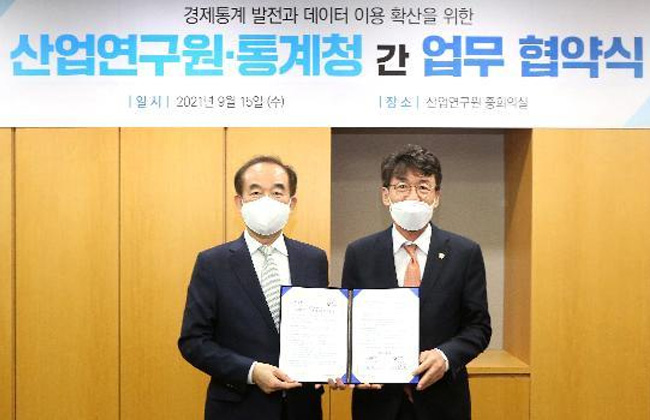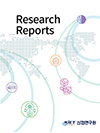Research Reports
Despite continued slower economic growth and weak domestic demand, imports of consumer goods have continued to grow and their market share has continued to increase. Korea’s GDP grew less than 3 percent (2.6%) in 2015, sparking concern that the Korean economy is trapped in structural low growth. From 2010 to 2014, Korea’s exports of consumer goods grew at an average annual rate of 5.5 percent, whereas its imports increased 10.4 percent, a more than double growth. Of particular note is that, in 2015 when the domestic economy and consumption remained sluggish, the total value of imports recorded a 16.9 percent year-on-year increase, whereas consumer goods imports rose 3.4 percent during the same period. As of September 2016, total exports of consumer products fell 10.6 percent, whereas their imports grew 1.0 percent. Against this backdrop, there is a rising need to examine the multiple factors at work in growth of Korea’s imports of consumer goods.
It is a widely-known fact that growth in key export industries was the key driver behind Korea’s economic development in the past. However, except for a few industries such as semiconductors, displays and shipbuilding, the manufacturing sector is producing more goods for domestic consumption than for export. This means the domestic market is still an important source of revenue for Korea’s manufacturing industry. According to the findings of this study on six consumer goods industries, as of 2014, the share of exports among locally-produced goods stood at 37.3 percent, whereas that of goods for domestic consumption reached 62.7 percent. There is particular concern that if the market share of imported consumer goods continues to rise, the growth of unemployment, despite the recovery of Korea’s economic growth rate, will accelerate for some of the leading labor-intensive assembly industries including automobiles, electronic appliances, apparel, and food. As such, as consumer goods imports continue increasing their presence on the domestic market, the very foundations of Korea’s manufacturing industry will likely be shaken. Notwithstanding, the government’s industrial policy has focused more on the facilitation of exports and the nurturing of promising future industries from a mid- and long term perspective, rather than on stimulus of the domestic market. Therefore, the time is now for Korea to closely examine the current situation of consumer goods imports onto the domestic market, and take prompt action in response to the current sharp increase in this area.

The works on this page are licensed for fair use under the provisions of the Korea Open Government License. See kogl.or.kr for more information.
Please enter the security text below
to prevent email collection
Please check the information of the person in charge.
연구과제 제안이 접수되었습니다.
신청이 접수되었습니다.


View Summary
코로나19 발생 이후 대부분의 고용 관심사가 항공 및 여행서비스, 음식·숙박 서비스 등 주로 서비스 업종에 집중된 상황에서 본 연구는 최근 그 중요성이 강조되고 있는 제조업의 고용변화를 살펴보았다. 분석에 따르면, 코로나19 이후 제조업 고용은 비교적 큰 충격 없이 빠르게 회복하는 모습을 보이고 있다. 제조업 고용은 서비스업에 비해 큰 충격 없이 유지되고 있고, 코로나19 직후 2020년 상반기에 약간 하락하였지만 하반기부터 회복 추세를 보이고 있으며, OECD 주요국의 제조업과 비교하여도 일본과 함께 고용 충격이 비교적 작게 나타나고 있다. 그러나 전반적으로 양호한 고용 성적에도 불구하고 제조업 내 특성 별로는 차이가 나타나는 것으로 보인다. 종사상 지위 별로 보면, 임시·일용직, 고용원이 있는 자영업자에서 고용 충격이 상대적으로 크게 나타났고, 상용직과 고용원이 없는 자영업자는 큰 충격이 없는 것으로 나타났다. 제조업 규모별로는 300인 이상의 경우 코로나 발생 초기 약간의 충격 이후 고용이 빠르게 반등하면서 코로나 이전보다 고용이 더 증가한 반면, 이보다 작은 규모의 제조업체들의 경우 고용 회복이 더디게 나타나고 있다. 고용의 중장기, 단기 추세선을 비교한 결과 제조업 업종에 따른 차이를 보였다. 코로나 발생 이전 3년간의 추세선을 2020년 1월부터 연장한 선과, 2020년 1월부터의 실제 자료를 이용한 단기 추세선을 비교한 결과, 의약품은 코로나19 발생 이전부터 시작하여 코로나19 발생 이후에도 견조한 증가세를 유지하고 있으며, 전자부품·컴퓨터, 기타운송장비, 가구는 코로나19 이후 오히려 고용 추세가 개선되었다. 그러나 다수 업종은 코로나 발생 이후 고용이 하락하였는데, 특히, 비금속광물, 1차금속, 금속가공 분야나 인쇄·기록매체 업종에서 하락이 상대적으로 크게 나타났다.
The following information is provided.
inform@kiet.re.krPlease complete the CAPTCHA below.
[전지적키에트시점] (Eng sub)심상치 않은
국내 대기업 움직임??
KIET 시점에서 보는 미래 로봇 산업 전망은
어떨까요?
경제전문가가 알려드립니다!
(산업연구원 박상수 실장)



